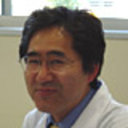Inhibitory effects of the ethyl acetate extract from bulbs of Scilla scilloides on lipoxygenase and hyaluronidase activities.
Mots clés
Abstrait
BACKGROUND
Scilla scilloides Druce (Liliaceae) is a folk medicine to treat dermal inflammation; however, the medicinal properties of this plant have not been completely established.
OBJECTIVE
The current study investigates the potent anti-inflammatory effects of S. scilloides bulbs for its traditional usage using lipoxygenase and hyaluronidase as the inflammation model. To gain insight into the active constituents, nine homoisoflavones (1-9) were subsequently tested.
METHODS
Lipoxygenase and hyaluronidase inhibition of ethyl acetate extract from the bulbs of this plant within 2000 µg/mL or homoisoflavones within 1000 µM were determined by colorimetric methods. RAW264.7 cells were incubated with 10 or 50 µM homoisoflavones plus lipopolysaccharide (LPS) for 24 h. The culture media were collected and analyzed for determination of the nitric oxide (NO) level by the colorimetric Griess method to measure the extent of inflammation.
RESULTS
The extract exhibited inhibitory effects on lipoxygenase and hyaluronidase activities with IC50 values 31.5 and 169 µg/mL, respectively. Among the nine homoisoflavones tested, four (1 and 3-5) resulted in 79.3-97.9% higher lipoxygenase inhibition than 6.7-32.7% of the others at 500 µM. Calculated IC50 values indicated 5 as the compound responsible for strong lipoxygenase inhibition with 15.8 µM as the IC50 value. In the hyaluronidase assay, all homoisoflavones tested at 1000 µM demonstrated 16.2-58.0% inhibition. Incubating the cells in the presence of all nine homoisoflavones tested at 50 µM significantly suppressed the NO production, downward to 1.5-66.0%, in the LPS-activated macrophage cells as a model.
CONCLUSIONS
These results may indicate a potential role of S. scilloides for anti-inflammatory purposes.


